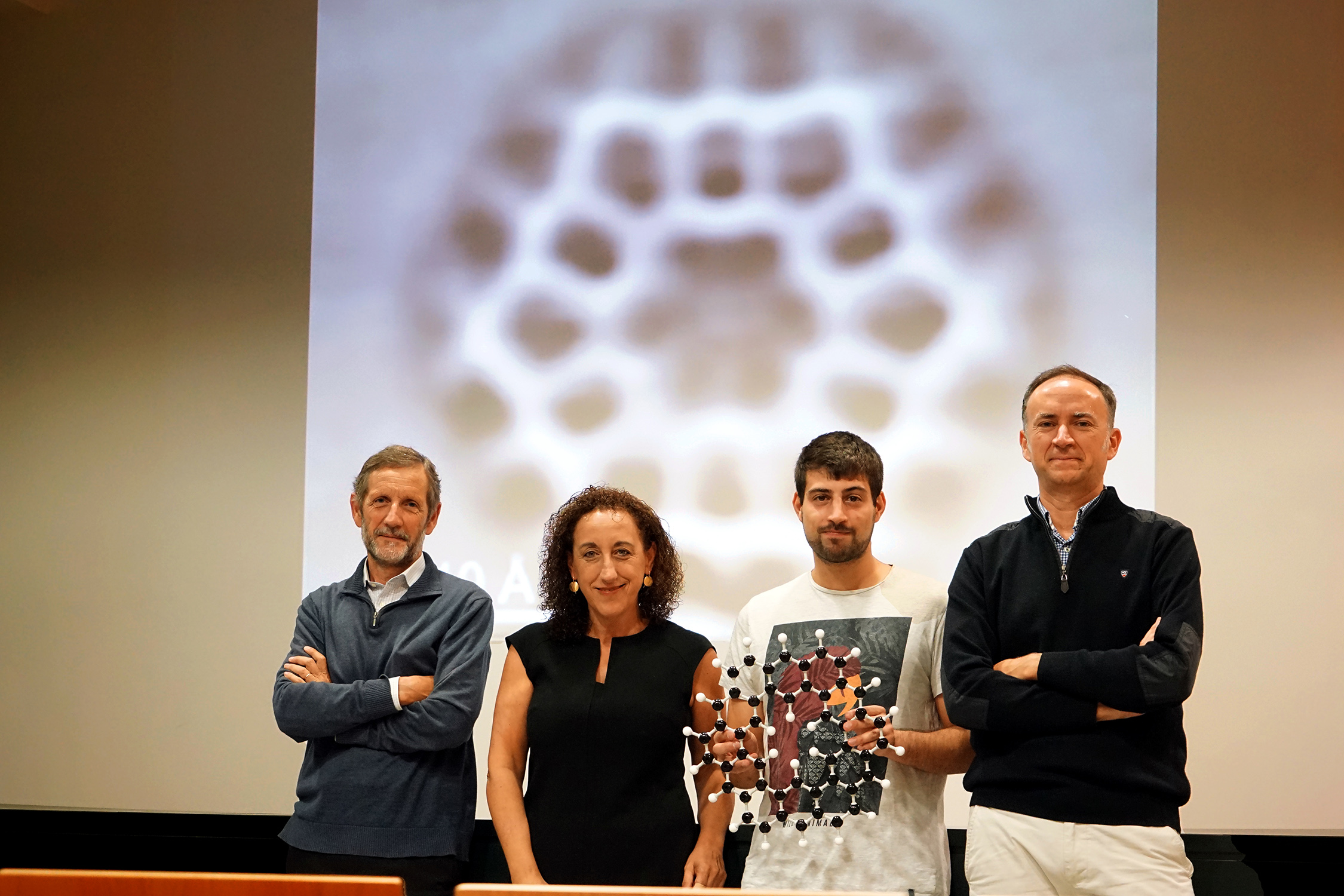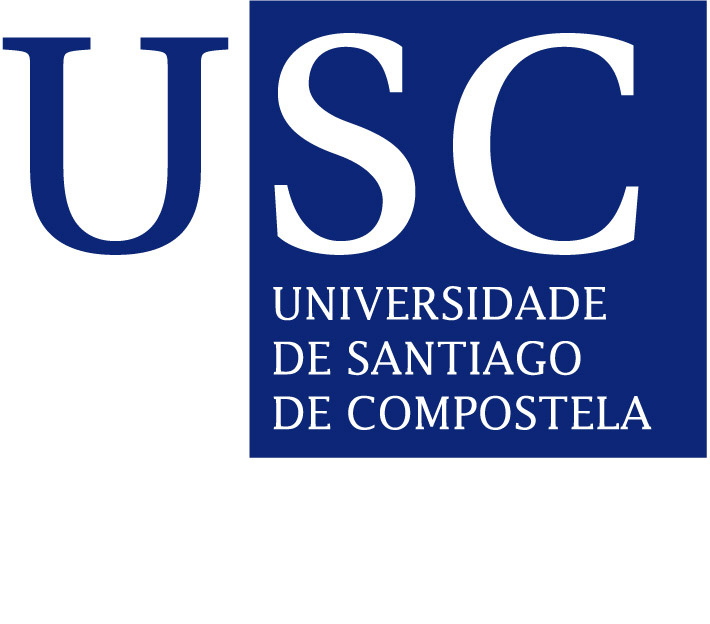A team of researchers from the center has developed a new synthetic route to isolate the 'kekulene'; a molecule from the family of cycloarenes which, four decades later, has been newly synthesized and visualized accurately for the first time with atomic precision, in a new collaboration with scientists from IBM Research (Switzerland).
 |
The CiQUS team responsible for the synthesis of kekulene. From left to right Enrique Guitián, Dolores Pérez, Iago Pozo and Diego Peña. / (Photo: Andrés Ruiz) |
By the end of the 19th century, the German chemist August Kekulé discovered the structure of benzene, laying the foundations to understand the singular stability of the so-called 'aromatic compounds'. More than a century later, scientists François Diederich Heinz A. Staab published in the journal Angewandte Chemie the first synthesis of one new compound which they called kekulene in honor of Kekulé, due to its structural similarity with the benzene molecule.
Since then, no other publication had reported the synthesis of kekulene, although it is probably the most studied member ot the cycloarene family. The peculiarities of its molecular and electronic structure has been discussed for decades, and recently it has sparked a renewed attention among chemists, since they have noticed that such molecules serve as models the design graphene pores.
Now, forty-one years after its first synthesis in 1978, a team integrated by scientists Dolores Pérez, Iago Pozo, Enrique Guitián and Diego Peña at CiQUS (Singular Center for Research in Biological Chemistry and Molecular Materials of the University of Santiago de Compostela), in collaboration with Leo Gross’ group at IBM Research Zurich (Switzerland), and with the computational support of Manuel Melle-Franco at the University of Aveiro (Portugal), has managed to re-isolate this iconic compound and, for the first time, visualizing its structure with atomic resolution, using the Atomic Force Microscopy (AFM) technique . The work has been published in the renowned Journal of the American Chemical Society.
Following CiQUS researcher Iago Pozo, first author of the article, the synthesis of cycloarenes is extremely challenging: “what we have done in this work is to simplify and to improve the first part of the synthesis of kekulene, building in a single step a synthetic intermediate of great importance", he says. "This has allowed us to obtain significant amounts of this intermediate and, from that point, to complete the preparation of kekulene following the route proposed by Diederich and Staab in the last steps", explains the predoctoral researcher.
Regarding the nanometric visualization of the molecule, Diego Peña explains that “the study of kekulene via ultra-high resolution AFM, addressed by our colleagues at IBM Research in Zurich, provided us with extremely accurate images of individual molecules of this hydrocarbon, considered an icon of organic chemistry”. The AFM images showed greater evidences on the electronic distribution in the kekulene, as researchers point: “we have seen that this distribution matches the ‘Clar model’, one of the structures predicted before, and discards a global electron delocalization in the molecule, an idea suggested by some authors and associated with the concept of superaromaticity”.
The results of this research constitute a new stimulus to the work of this research group around aromatic hydrocarbons. In words of Dolores Pérez, one of the authors responsible for the article, "we will continue on the use of aryne chemistry as building blocks in different unconventional compounds and, of course, we will continue combining this synthetic experience with powerful advanced microscopy techniques such as AFM", she says.
References
Revisiting Kekulene: Synthesis and Single-Molecule Imaging
Iago Pozo, Zsolt Majzik, Niko Pavliček, Manuel Melle-Franco, Enrique Guitián, Diego Peña, Leo Gross, and Dolores Pérez
Journal of the American Chemical Society 2019 141 (39), 15488-15493


